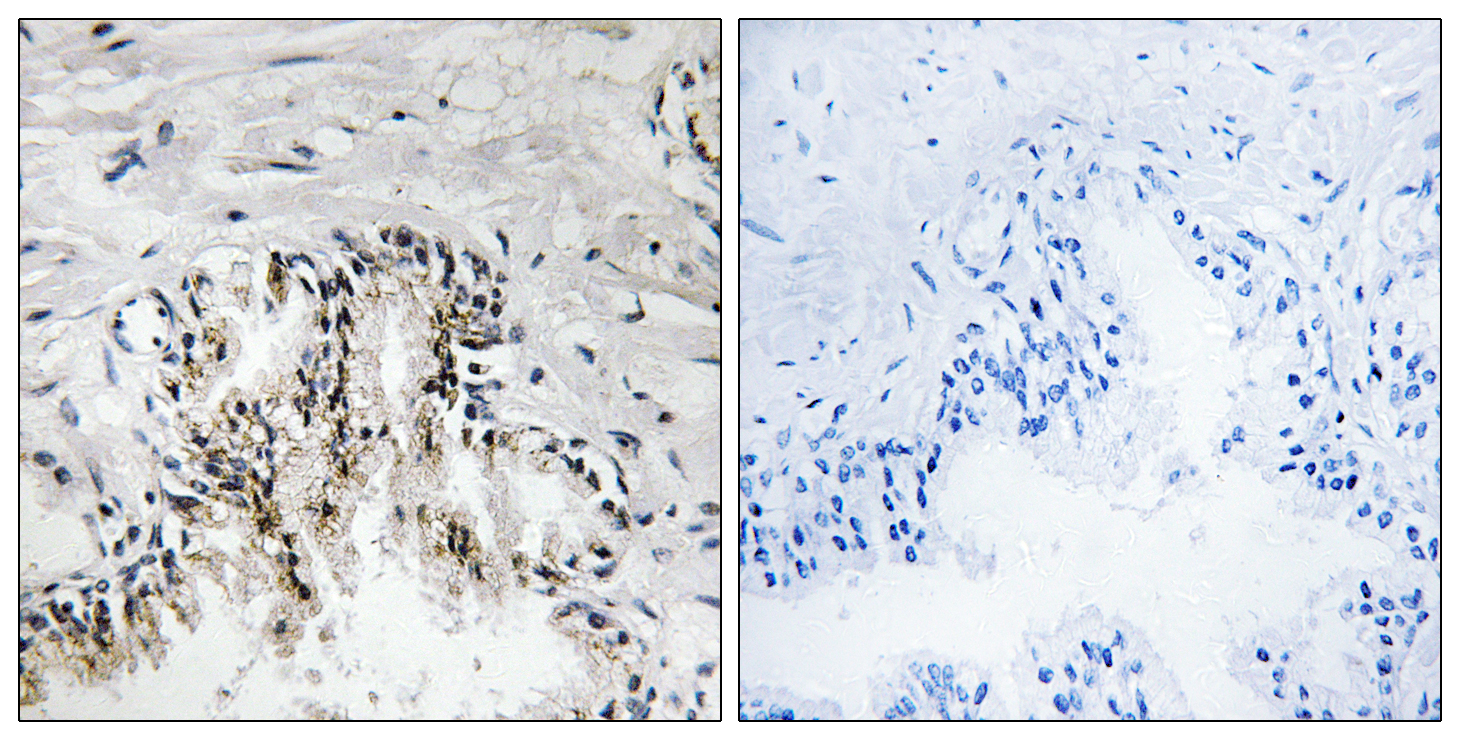产品名称
Ribosomal Protein L31 Rabbit Polyclonal Antibody
别名
RPL31; 60S ribosomal protein L31
蛋白名称
60S ribosomal protein L31
存储缓冲液
Liquid in PBS containing 50% glycerol, 0.5% BSA and 0.02% New type preservative N.
Human Gene Link
http://www.ncbi.nlm.nih.gov/sites/entrez?db=gene&term=6160
Human Swissprot No.
P62899
Human Swissprot Link
http://www.uniprot.org/uniprotkb/P62899/entry
Mouse Gene Link
http://www.ncbi.nlm.nih.gov/sites/entrez?db=gene&term=100042740
Mouse Swissprot No.
P62900
Mouse Swissprot Link
http://www.uniprot.org/uniprot/P62900
Rat Gene Link
http://www.ncbi.nlm.nih.gov/sites/entrez?db=gene&term=64298
Rat Swissprot Link
http://www.uniprot.org/uniprot/P62902
免疫原
The antiserum was produced against synthesized peptide derived from human RPL31. AA range:61-110
特异性
Ribosomal Protein L31 Polyclonal Antibody detects endogenous levels of Ribosomal Protein L31 protein.
稀释度
WB 1:500-2000 IHC 1:100 - 1:300. ELISA: 1:40000. IF 1:50-200
宿主
Polyclonal, Rabbit,IgG
背景介绍
Ribosomes, the organelles that catalyze protein synthesis, consist of a small 40S subunit and a large 60S subunit. Together these subunits are composed of 4 RNA species and approximately 80 structurally distinct proteins. This gene encodes a ribosomal protein that is a component of the 60S subunit. The protein belongs to the L31E family of ribosomal proteins. It is located in the cytoplasm. Higher levels of expression of this gene in familial adenomatous polyps compared to matched normal tissues have been observed. As is typical for genes encoding ribosomal proteins, there are multiple processed pseudogenes of this gene dispersed through the genome. Alternatively spliced transcript variants encoding distinct isoforms have been found for this gene. [provided by RefSeq, Jul 2008],
组织表达
Brain,Epithelium,Liver,Prostate,
细胞定位
cytosol,ribosome,focal adhesion,membrane,cytosolic large ribosomal subunit,extracellular exosome,
功能
similarity:Belongs to the ribosomal protein L31e family.,
纯化
The antibody was affinity-purified from rabbit antiserum by affinity-chromatography using epitope-specific immunogen.

